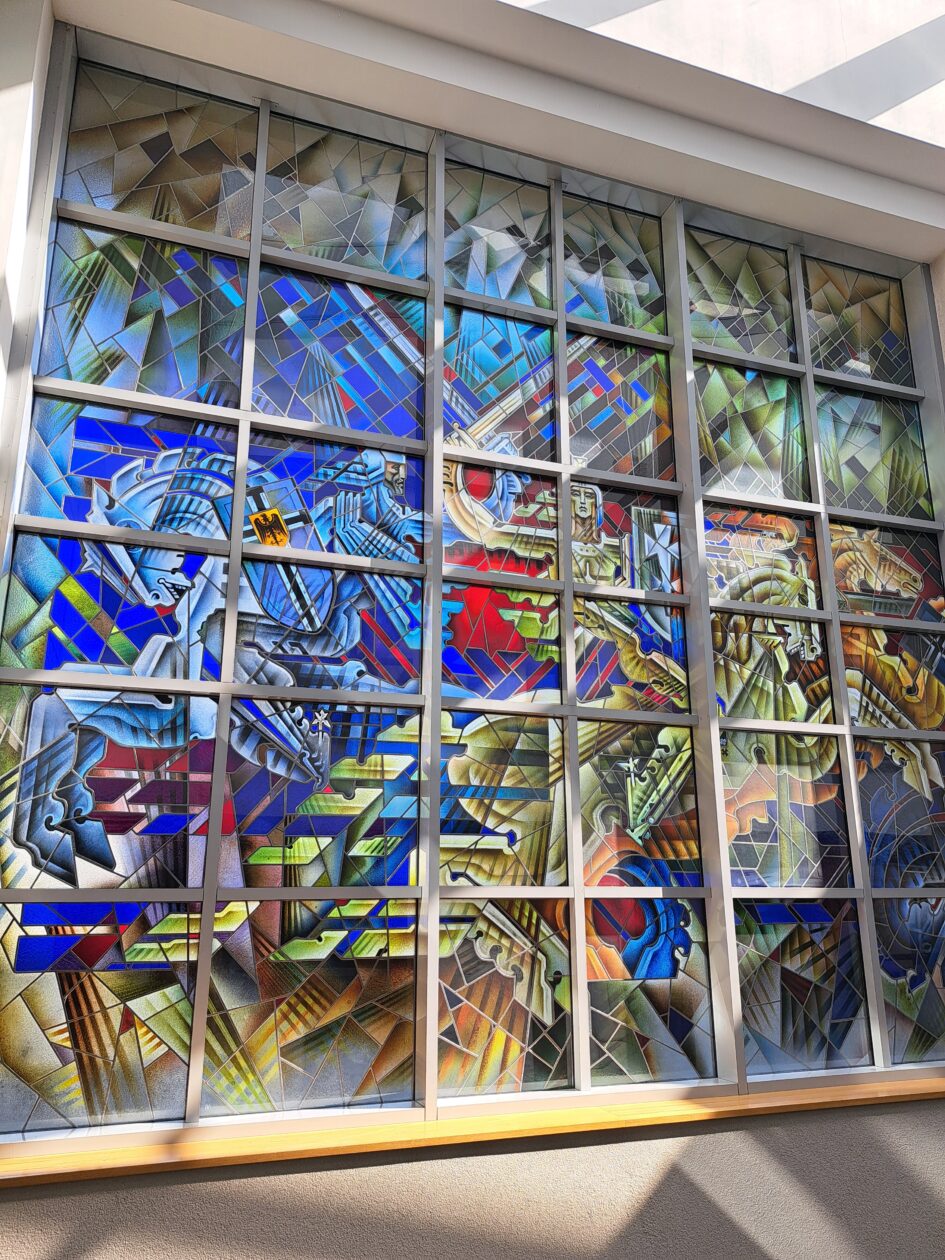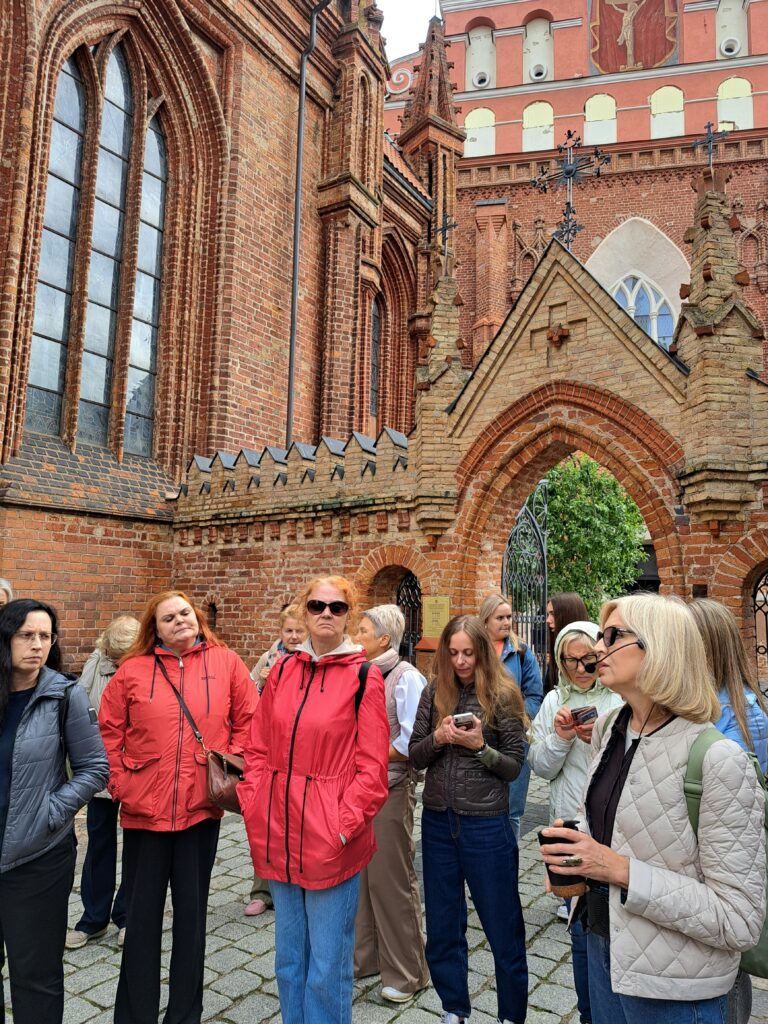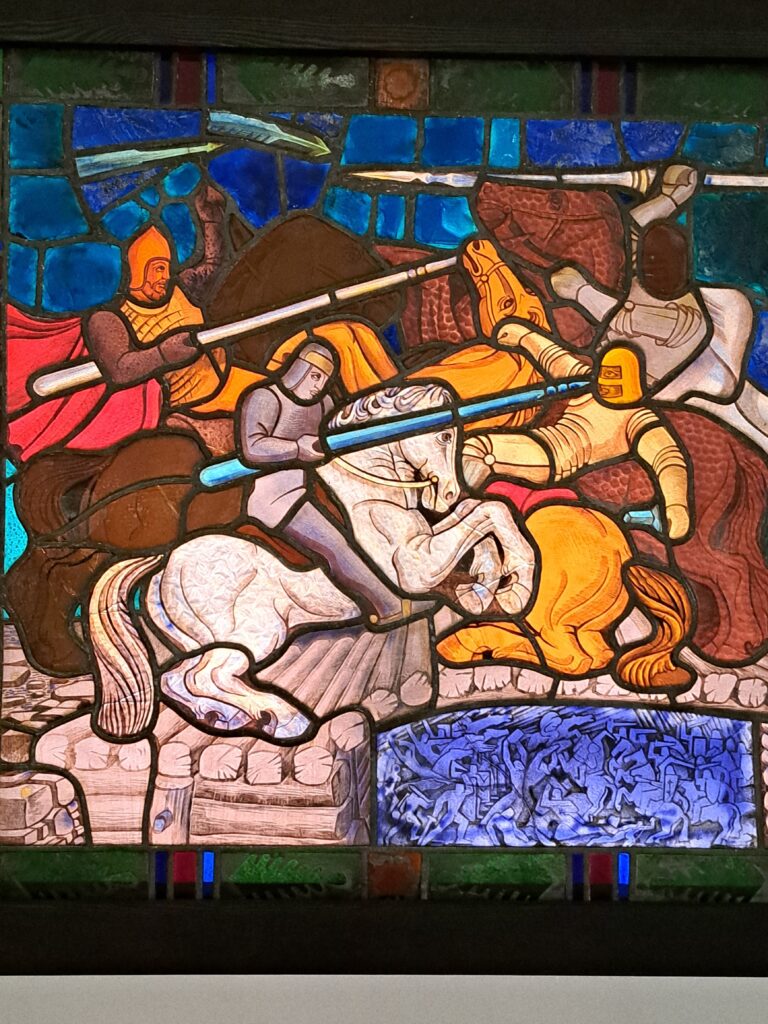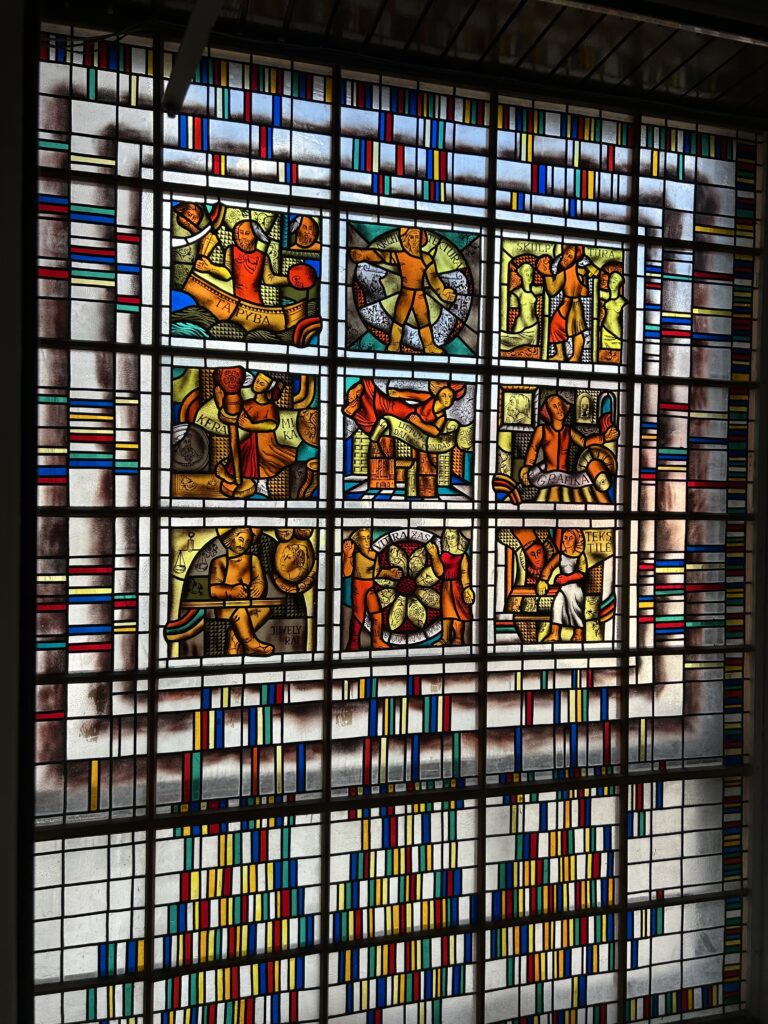Until you witness the delicate play of light through stained glass, it is easy to remain indifferent to this fragile art form. To grow new admirers during our project, Klaipėda City Municipality I. Kant Public Library organized an excursion to explore stained glass artworks in Vilnius, the capital of Lithuania.
How did stained glass appear in Klaipėda City Municipality I. Kant Public Library? The library began digitizing monumental art—frescoes and stained glass—in 2019. Two significant projects funded by the Lithuanian Council for Culture were implemented: “Monumental Painting in the Labyrinths of Architecture: Past and Present” and “Stained Glass in the Interiors of Klaipėda’s Public Buildings: History and Present.” Based on the collected material, a virtual fresco and stained glass map was created: https://www.biblioteka.lt/freskos/
In 2025, the library launched another project, “Stories in Glass: Stained Glass Art Today and Tomorrow”, also partly funded by the Lithuanian Council for Culture. Its goal is to popularize this disappearing art form, raise awareness of its destruction, and encourage responsibility for preserving this heritage. Throughout the summer—and continuing until the end of the year—various cultural activities are being held to rediscover stained glass as a valuable site-specific art form. One of them was the August 27 excursion to Vilnius, part of the “Stories in Glass” project.
The Stained Glass Route that You can experience visiting Vilnius: The tour began with the ensemble of St. Anne’s and Bernardine Churches—the most famous Gothic monument in Lithuania, included in the Register of Cultural Property in 1992. The ensemble includes St. Anne’s Church, the Bernardine (St. Francis of Assisi) Church, the bell tower, chapel, and monastery.
Inside the Bernardine Church are thematic sacred stained glass windows by artist Bronius Bružas. Restoration is currently underway, so we admired them from outside. Even so, travelers were richly rewarded: the interior preserves the oldest Gothic wall paintings in Lithuania, ten Baroque wooden altars, a pulpit, tombstones, and other art treasures. Between 1513 and 1521, wall paintings in the al secco technique were created here—the only well-preserved example of late Gothic mural painting in Lithuania. Their subjects bring Franciscan literary texts to life, depicting devotion to the suffering Christ, saints’ lives, and the Franciscan order’s history. Another remarkable object in the church is Lithuania’s oldest known crucifix, carved in the 15th century, displayed in the Chapel of St. Florian (Three Kings). Our next stop was the Gothic gem, St. Anne’s Church. At first, we feared the locked doors would prevent our visit, but exactly at 11 a.m., the heavy wooden doors opened. The late Gothic church is rectangular, single-nave, with a three-sided apse in the presbytery. Its facades, composed of around thirty different brick profiles made specifically for the church, are vertical and highly sculptural.
The northern nave’s stained glass windows were created by the late Antanas Garbauskas, starting in 1988. Their ornamentation echoes the Gothic lines and architectural details of the church. Plans were made to complete the southern nave’s stained glass, but the artist passed away in 2008 before finishing the work.
The stained glass route continued along Arklių Street to a large building housing two cultural institutions: the State Youth Theatre and Puppet Theatre. The residence, dating back to the 16th century, was transformed into a palace complex by the Ogiński family in the 17th–18th centuries. Its architecture suffered through wars and Soviet occupation but was reconstructed in 1982.
Today, the Youth Theatre foyer is adorned with Romas Dalinkevičius’s fresco-sgraffito “Birth of Theatre” (1983), while its windows feature Bružas’s ornamental stained glass. Another of his thematic works, illustrating the theatre’s productions, graces the second-floor foyer.
On Vokiečių Street, we admired Algirdas Dovydėnas’s stained glass “Muses of Art” (1976), created for the Lithuanian Artists’ Fund building.
The Highlight: Stained Glass in the Lithuanian Parliament. The most impressive stop was the Lithuanian Seimas (Parliament). Guided by Artūras Svarauskas, we admired monumental works by Kazys Morkūnas, one of Lithuania’s greatest stained glass masters. “Celebration” (1981): a monumental 180 m² stained glass in the First Seimas Palace, blending realistic and allegorical figures. Despite Soviet-era constraints, Morkūnas infused it with symbolic imagery—motherhood, science, and art—rather than propaganda.
“The Battle of Grunwald” (2011): a 25 m² stained glass in the Second Seimas Palace, commemorating the 600th anniversary of the battle.
Final Stops: At the Martynas Mažvydas National Library, we viewed Antanas Garbauskas’s “Toward a Bright Future” (1963), a vibrant stained glass centerpiece of the building’s interior. We ended the journey at the Museum of Applied Arts and Design, where art historian Dr. Ramutė Rachlevičiūtė introduced us to the work of modernist Stasys Ušinskas—painter, stage designer, puppeteer, and stained glass artist.
So, the next time you see light filtering through a window in hues of blue, red, or amber—pause. You may have stumbled upon another story in glass.
Text and photos by Birutė Andruškaitė




Leave a Reply